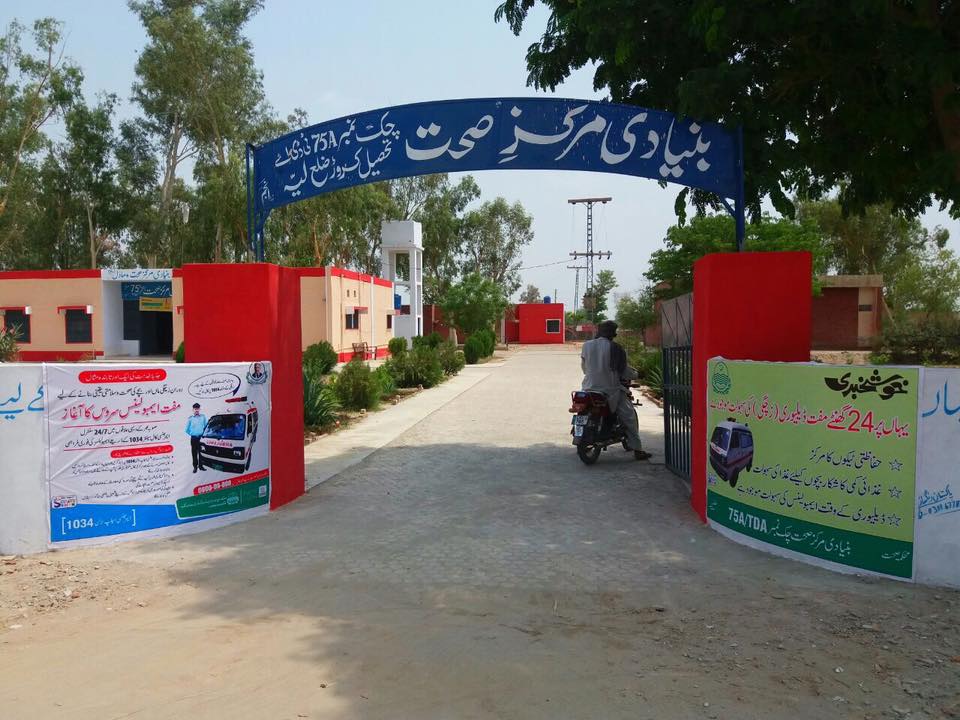
Fifteen years ago, Pakistan experienced devastating floods that wreaked havoc across the nation, particularly in the Southern part of Punjab, the most populous province. The floods presented a severe challenge from which the country has not fully recovered yet. They also offered an unexpected opportunity, however. During the flood response, the Health Department of Punjab Province made a pivotal decision to leverage existing health infrastructure to provide emergency medical and obstetric services in the affected districts. This decision breathed new life into facilities known as Basic Health Units (BHUs), which had long been considered redundant and non-functional. The disaster response related emergency funding from UN agencies (i.e. UNICEF and UNFPA) provided the – required – added resources.
Prior to 2010, the BHUs functioned six hours a day, from 8 AM to 2 PM, six days a week. The performance of these facilities was sub-optimal, and the Government machinery was always struggling to optimize these health facilities in order to justify the public expenditure on these facilities. Typically, a BHU is a one-bedded out-patient clinic manned by a medical doctor, a midwife (known as Lady Health Visitor), a dispenser, a storekeeper, a security guard and outreach staff including vaccinators and health workers. These BHUs had a low turnover of clients due to staff absence, shortage of medicines and limited working hours. In total, Punjab has around 2,500 BHUs.
In order to equip the BHUs for emergency obstetric and neonatal care services in the post-flood scenario, 70 of these facilities (which were located in flood affected areas) were declared as 24/7 BHUs after provision of additional human resources (midwives, female caretakers, and a male security guard); and additional medical supplies to cater to the increased uptake of services. Capacity of the deployed staff was built in various areas including basic Emergency Obstetric and Newborn Care (EmONC), maternal and child nutrition, neonatal care, etc. Performance management of staff occurred through a robust monitoring system, including via available digital tools at the time and through public accountability systems. A helpline number was announced for complaints in case of absence of staff, facility closure, or shortage of supplies.
Within a month after launching, the performance of these BHUs improved by 20 times the baseline performance – with the average number of normal births managed at a facility jumping from 0-1 per month to 20 per month. Within a year, the average performance of each of these 70 BHUs increased to around 40 deliveries per month. Similarly, improvements were seen in the number of outdoor patients as well as on antenatal care, vaccination services and family planning services. Community trust in the BHUs started to improve. Acknowledging the performance improvements, additional funds were allocated to this initiative and the number of BHUs functioning round the clock was increased to 150.
By 2014, the Department of Health had gathered sufficient evidence on the effectiveness of the 24/7-model of BHUs that the Government was convinced to fund it henceforth through its own resources. Within a year, the Government of Punjab funded and scaled up the initiative from 150 to 700 BHUs. With time, the number of facilities increased further – by now, 2,000 out of the 2,500 BHUs of Punjab are functioning round the clock. An average of 50-60 women deliver every month at each of these BHUs, and some of them are referred to higher facilities for management of complications. A network of rural ambulances is also linked to these facilities to offer transport to the women and children.
Each of these 2,000 24/7 BHUs is now equipped with sufficient human resources, medical supplies, electronic reporting systems and internet connectivity. Every service provided at these health facilities is digitally recorded and reported in real-time to a central server. This information is not only used for performance monitoring but also to ensure and improve quality of care. A functionality scorecard is available and updated for each facility on a monthly basis and reviewed both at the district and provincial level. Health facilities have been provided with a highly flexible funding mechanism for minor procurements, repair and maintenance. These funds are utilized on the basis of local needs identified and approved by the health councils. Guidelines for utilization are standardized across the province to ensure financial transparency.
The impact of these health facilities and associated services (i.e., referral system of rural ambulance service) in improving maternal and child health outcomes is obvious from the decline witnessed in maternal, neonatal and child mortality in the province. According to recent estimates from the Multiple Indicators Cluster Survey (MICS) of Punjab for 2024, the neonatal mortality rate (NMR) went down from 58 (PDHS 2007) to 33 per 1,000 live births (MICS 2024), while child mortality declined from 111 (MICS 2008) to 55 per 1,000 live births (MICS 2024).
The remarkable transformation of more or less “non-functional” Basic Health Units into 24/7 operational facilities showcases the Punjab Government’s unwavering commitment to improving public health. Through strategic intervention during the flood response and the years after, it turned PHC into a beacon of hope for many women and children.
Undoubtedly, remarkable improvement in service delivery is witnessed from CHARM era to current scenario. Resultantly, conspicuously results have shown that Maternal and Child Health has been improved with this initiative in addition to build up the community trust for these 24/7 BHUs